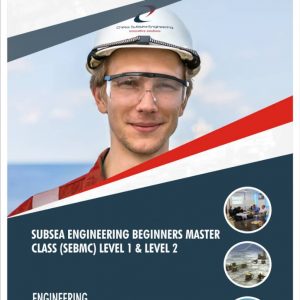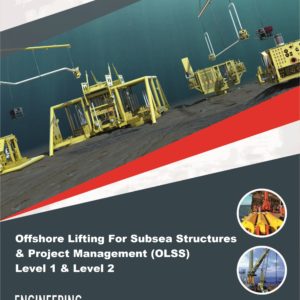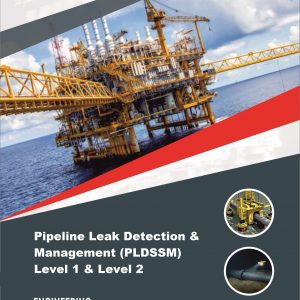Description
The Risk Based Inspection of Subsea Production System (SRRE) Level 1 to Level 3 course is a comprehensive training program designed to educate professionals about the process of conducting risk-based inspections on subsea production systems.
The course covers various aspects of subsea production systems, including wellheads, flowlines, umbilicals, and risers, providing in-depth knowledge of their design, construction, and operational considerations.
Students learn about risk assessment methodologies and techniques used to evaluate the integrity and performance of subsea production systems, including probabilistic modeling, failure mode and effects analysis (FMEA), and inspection planning.
The training program includes practical exercises and case studies to familiarize participants with real-world scenarios and challenges encountered in subsea operations, enabling them to develop problem-solving skills and make informed decisions.
The course is typically structured into different levels, with each level building upon the knowledge and skills acquired in the previous level, allowing participants to progress from a foundational understanding of risk-based inspection to more advanced concepts and applications.
Risk Based Inspection of Subsea Production System (SRRE) Level 1 to Level 3 covers Overview of Risk-Based Inspection methodology, Benefits of RBI for subsea production systems, Regulations and standards for RBI in the oil and gas industry, Overview of subsea production system components, Failure modes and mechanisms of subsea production system components, Corrosion and erosion mechanisms, Inspection techniques for subsea production system components, Probability of failure and consequence of failure assessment, Identification and assessment of risk drivers, Ranking of subsea production system components based on risk, RBI planning process and objectives, Selection of inspection techniques and intervals, Data management and risk communication, Cost-benefit analysis of RBI planning, Execution of inspection and monitoring plan, Evaluation of inspection and monitoring data, Updating of risk ranking and inspection plan, Integration of RBI results with maintenance and integrity management plans, Risk Acceptance Criteria, Subsea RBI Workflow, Subsea Equipment Risk Determination, Reliability Data for Offshore Equipment, Pipeline Degradation Mechanisms, Assessment of Pipeline PoF value, Assessment of CoF Values, Risk Identification & Criteria, Subsea Manifold Degradation Mechanism, Subsea Manifold RBI Basis Assessment, Subsea RBI Detailed Assessment, RBI Planning, Subsea Manifold Degradation Mechanism, Subsea Manifold RBI Basis Assessment, Subsea RBI Detailed Assessment, Subsea Manifold Degradation Mechanism, Subsea Manifold RBI Basis Assessment, Subsea Tree RBI Process, Collection of Information, Risk Acceptance Criteria, Degradation Mechanisms and Failure Mode, Failure modes of a tree as documented on the OREDA Database , Subsea Tree Risk Assessment, Real-world examples of RBI for subsea production systems, Lessons learned and best practices, Case studies of successful and unsuccessful RBI implementation, Emerging technologies for subsea production system inspection and monitoring, New regulations and standards for RBI in the oil and gas industry, Opportunities and challenges for the future of RBI in subsea production systems and more
Risk Based Inspection of Subsea Production System (SRRE) Level 1 to Level 3 is designed to provide detailed knowledge of Risk Based Inspection of Subsea Production System and will assist those who are switching or enhancing there career in deep and ultra deepwaters subsea engineering.
Course Outlines
Subsea Systems RBI Methodology
Risk Acceptance Criteria
Subsea RBI Workflow
Subsea Equipment Risk Determination
Reliability Data for Offshore Equipment
Pipeline Degradation Mechanisms
Assessment of Pipeline PoF value
Assessment of CoF Values
Risk Identification & Criteria
Subsea Manifold Degradation Mechanism
Subsea Manifold RBI Basis Assessment
Subsea RBI Detailed Assessment
RBI Planning
Subsea Manifold Degradation Mechanism
Subsea Manifold RBI Basis Assessment
Subsea RBI Detailed Assessment
RBI Planning
Subsea Manifold Degradation Mechanism
Subsea Manifold RBI Basis Assessment
Subsea Tree RBI Process
Collection of Information
Risk Acceptance Criteria
Degradation Mechanisms and Failure Mode
Failure modes of a tree as documented on the OREDA Database
Subsea Tree Risk Assessment
RBI – Subsea XT FMECA Case Study
Technical Support References
Ref 1: Overview of Risk-Based Inspection methodology
Ref 2: Benefits of RBI for subsea production systems
Ref 3: Regulations and standards for RBI in the oil and gas industry
Ref 4: Overview of subsea production system components
Ref 5: Failure modes and mechanisms of subsea production system components
Ref 6: Subsea production system corrosion and erosion mechanisms
Ref 7: Inspection techniques for subsea production system components
Ref 8: Subsea production system probability of failure and consequence of failure assessment
Ref 9: Subsea production system identification and assessment of risk drivers
Ref 10: Ranking of subsea production system components based on risk
Ref 11: RBI planning process and objectives of subsea production system
Ref 12: Selection of inspection techniques and intervals of subsea production system
Ref 13: Data management and risk communication of subsea production system
Ref 14: Cost-benefit analysis of RBI planning of subsea production system
Ref 15: Execution of inspection and monitoring plan of subsea production system
Ref 16: Evaluation of inspection and monitoring data of subsea production system
Ref 17: Updating of risk ranking and inspection plan of subsea production system
Ref 18: Integration of of subsea production system RBI results with maintenance and integrity management plans
Ref 19: Real-world examples of RBI for subsea production systems
Ref 20: Lessons learned and best practices
Ref 21: Case studies of successful and unsuccessful RBI implementation
Ref 22: Future of RBI for Subsea Production Systems
Assessment
Participant underpinning knowledge of Risk Based Inspection of Subsea Production System will be accessed with short answer multiple-choice questionnaire at the conclusion of the course.
Outcome
Participants will gain an in debt understanding of Risk Based Inspection of Subsea Production System.They will also be able to function with minimum supervision as a Subsea Engineer for IOCs, subsea pipeline company contractor, vendor or installation company.
Professional Certificate
Issued directly by Chess Subsea Engineering Europe.
Participant may be presented for Offshore Petroleum Training Organization (OPITO) Certification.
How to Register
Click here to download registeration booklet on msword and email completed booklet to info@chesssubseaengineering.org directly.










